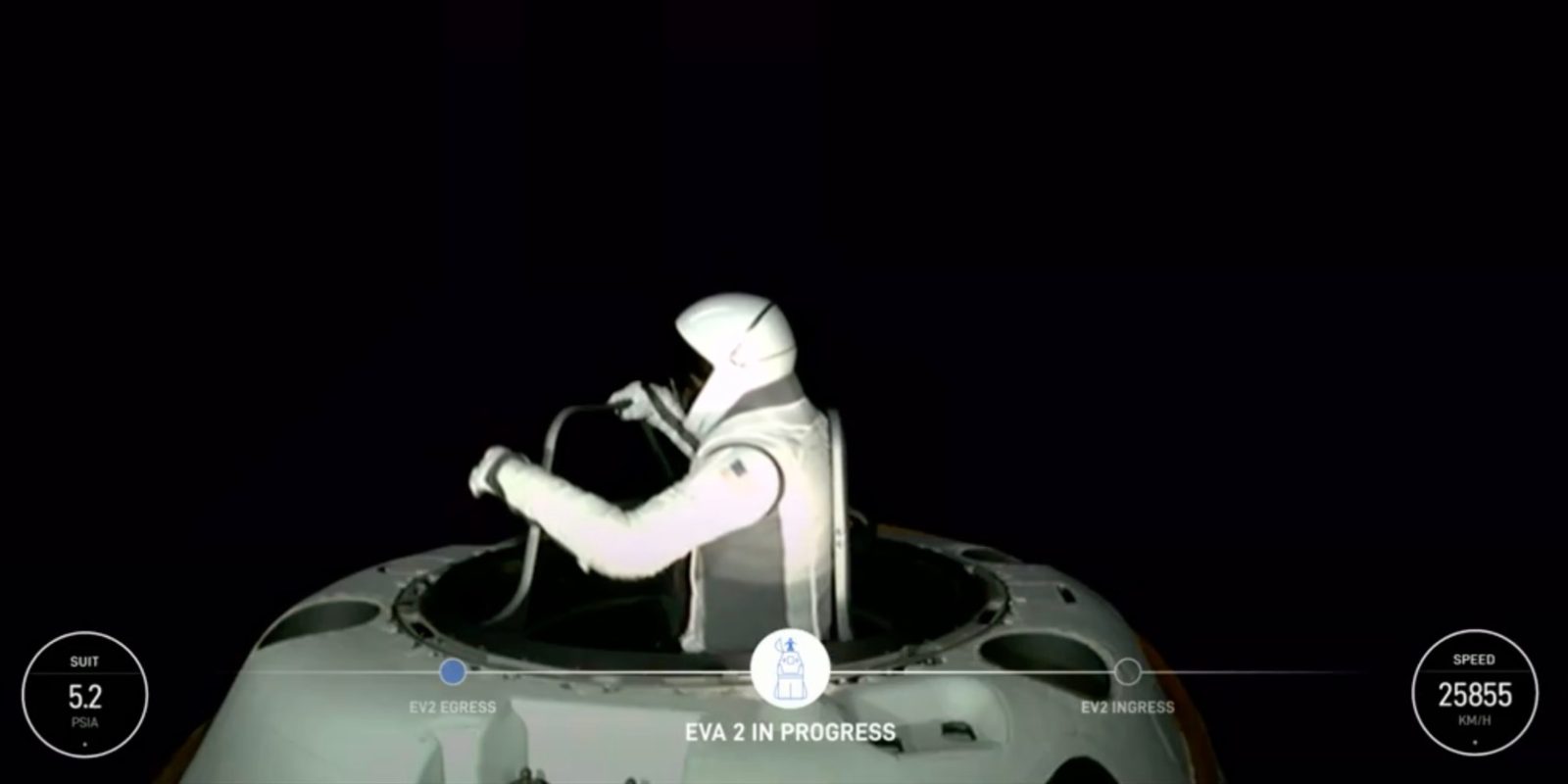
Early Thursday morning, the crew of the Polaris Dawn mission completed its second major milestone with the completion of SpaceX‘s first commercial spacewalk. This marks another step towards SpaceX’s goal to colonize Mars using their own tech.
At 6:13 A.M. ET, SpaceX announced the beginning of EVA operations with a GO by the crew and ground controllers to start flowing pure oxygen into the Polaris Dawn’s suits. These suits are a redesign of SpaceX’s IVA (intravehicular activity) suit. The suits allow for increased range of motion, radiation protection, and a nest of other features needed for activities outside SpaceX’s Dragon spacecraft.
While only the commander Jared Isaacman and SpaceX engineer Sarah Gillis ventured outside the spacecraft, all four crew members wore the suits. This was due to the requirement of the Dragon’s atmosphere being entirely vented for the duration of the spacewalk.
The crew began opening the Dragon’s top hatch, the same used during docking with the ISS, at 6:43 A.M. ET. On the other side of the hatch was a structure called the Skywalker, a series of hand and footholds that allowed the crew to easily venture just outside Dragon.
Isaacman stepped out first at about 6:53 AM ET before reentering the Dragon for Gillis’ turn at about 7:28 AM ET. Both crew members conducted several mobility tests with the suit to see how they operated in the vacuum of space. Neither crew member shared any issues with the Skywalker or SpaceX EVA suits during or after their spacewalks.
So why are SpaceX and Polaris conducting such experiments when NASA and other nations have been performing EVAs for decades? Is Polaris Dawn just a pointless redo of NASA’s Gemini program?
It’s easy to question the usefulness when you compare Polaris and SpaceX to NASA or Roscosmos. And if all SpaceX wanted to be was another contractor for the US government, they wouldn’t even touch missions like this, but SpaceX has larger goals than just delivering weather and communication satellites into orbit.
SpaceX is more of a “space tech” company than an aerospace firm like Boeing or Lockheed Martin. They don’t develop rockets and spacecraft for customers but develop new products and features for their own use for future missions, like going to Mars.
And if someone like Isaacman or NASA wants to pay for a mission to help subsidize the cost of the development, then so be it. (Or help pay for the development as a whole like NASA and Dragon.)
Part of that product development is real-world testing. That means sending people into space to see how the suit and procedures hold up. This also grows SpaceX’s knowledge base as a company, giving them experience in conducting these complex missions.
So when SpaceX does possibly make it to Mars, this will be a moment looked back on as the key stepping stone to getting there.
FTC: We use income earning auto affiliate links. More.



Comments